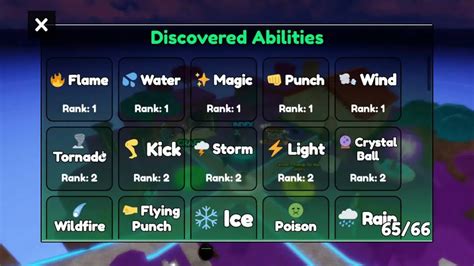Ability to Craft Recipes: Unleash Your Inner Chef
Are you passionate about food but feel overwhelmed by the prospect of creating your own recipes? Do you dream of whipping up culinary masterpieces but lack the confidence to experiment? Fear not! This guide will empower you to develop your own unique recipes, transforming you from a food enthusiast to a confident recipe creator.
Understanding the Building Blocks of a Recipe
Before diving into the creative process, let's lay a solid foundation. A successful recipe relies on several key components:
1. Ingredients: The Heart of the Matter
- Quality over Quantity: Focus on using fresh, high-quality ingredients. The better your ingredients, the better your dish will taste.
- Variety is Key: Don't be afraid to experiment with different flavors and textures. Explore diverse cuisines and culinary traditions for inspiration.
- Precise Measurements: While some recipes allow for flexibility, accuracy is crucial, especially when baking. Invest in a good kitchen scale for precise measurements.
2. Method: The Art of Execution
- Step-by-Step Instructions: Break down the recipe into clear, concise steps. This is vital for both your own reference and for sharing your recipe with others.
- Visual Aids: Consider incorporating photos or videos to guide users through each step of the process. Visual learners will greatly appreciate this.
- Timing is Everything: Specify cooking times and temperatures accurately. This ensures consistent results every time.
3. Flavor Profile: Crafting a Culinary Symphony
- Balance is Essential: Aim for a balanced flavor profile, incorporating elements of sweet, sour, salty, bitter, and umami.
- Experiment with Spices and Herbs: Don't be afraid to experiment with different spices and herbs to create unique and exciting flavor combinations.
- Taste as You Go: The most important tool in recipe creation is your palate. Taste throughout the cooking process and adjust seasoning as needed.
Developing Your Own Recipes: A Practical Approach
Now that you understand the fundamentals, let's explore a practical approach to recipe development.
1. Inspiration Strikes: Find Your Muse
- Culinary Exploration: Explore different cuisines, restaurants, and cookbooks for inspiration.
- Personal Preferences: Start with dishes you already enjoy and modify them to your liking.
- Seasonal Ingredients: Utilize seasonal produce for the freshest flavors and optimal nutritional value.
2. Experimentation: The Key to Culinary Success
- Start Small: Begin with simple recipes and gradually increase the complexity as you gain confidence.
- One Variable at a Time: When experimenting, change only one ingredient or step at a time to isolate the effect of your modifications.
- Record Your Results: Meticulously document your experiments, including ingredient quantities, cooking times, and tasting notes.
3. Refinement and Iteration: Perfecting Your Creation
- Seek Feedback: Share your creations with friends and family and solicit constructive criticism.
- Adjust and Refine: Based on the feedback you receive, make adjustments to your recipe to achieve your desired outcome.
- Repeat and Refine: The iterative process of testing, refining, and retesting is crucial to creating a truly exceptional recipe.
Sharing Your Culinary Creations: From Kitchen to Community
Once you've perfected your recipe, consider sharing it with the world! This not only allows others to enjoy your culinary creations but also helps you grow as a recipe creator.
- Food Blogs and Websites: Many platforms allow you to share your recipes with a wider audience.
- Social Media: Showcase your culinary creations on platforms like Instagram and Pinterest.
- Recipe Sharing Apps: Use recipe apps to connect with other food enthusiasts and share your recipes easily.
By following these steps and embracing your culinary creativity, you'll develop the ability to craft recipes that are not only delicious but also uniquely your own. So, put on your chef's hat, gather your ingredients, and unleash your inner culinary artist!
